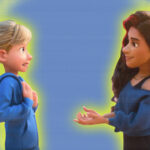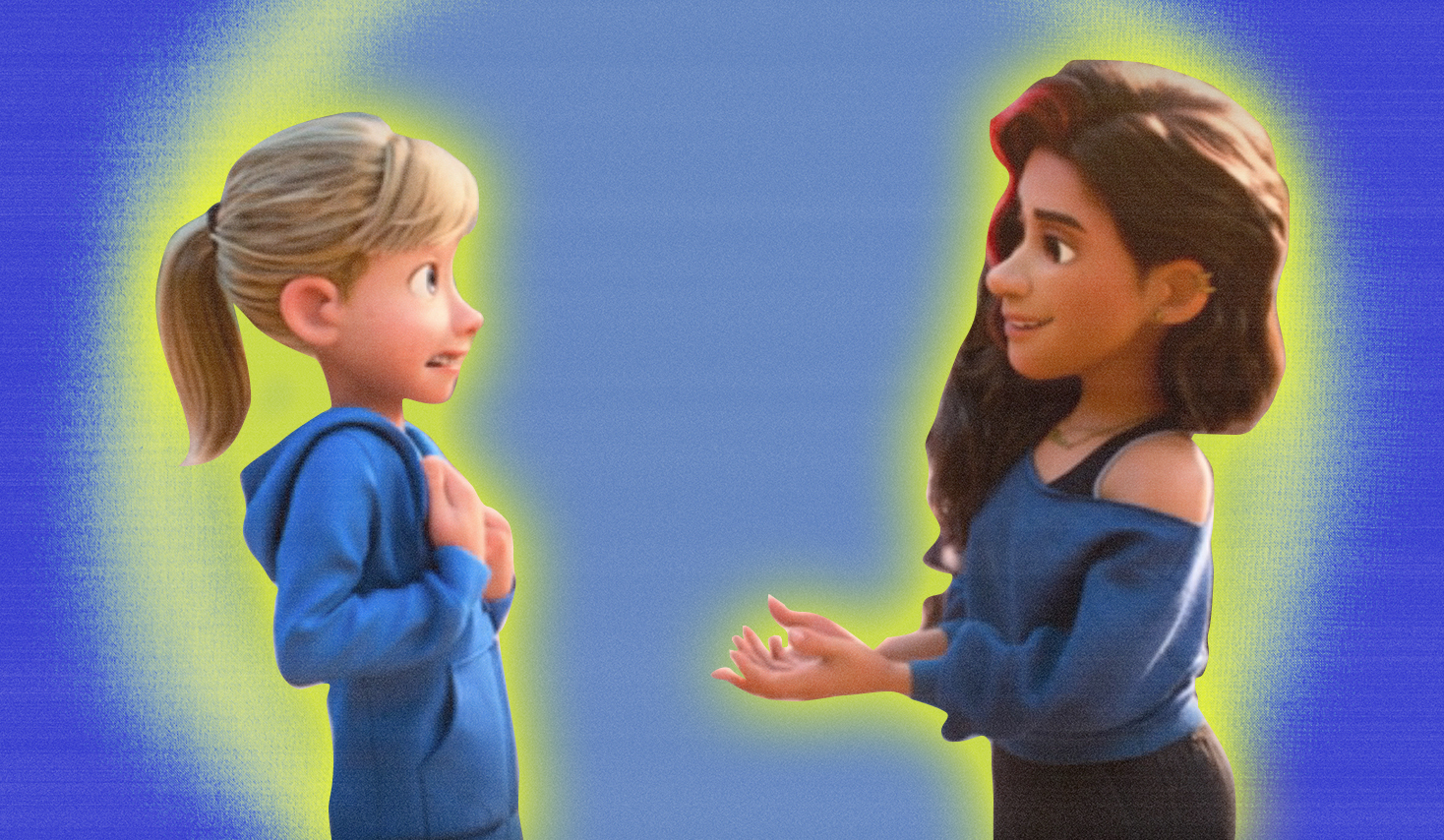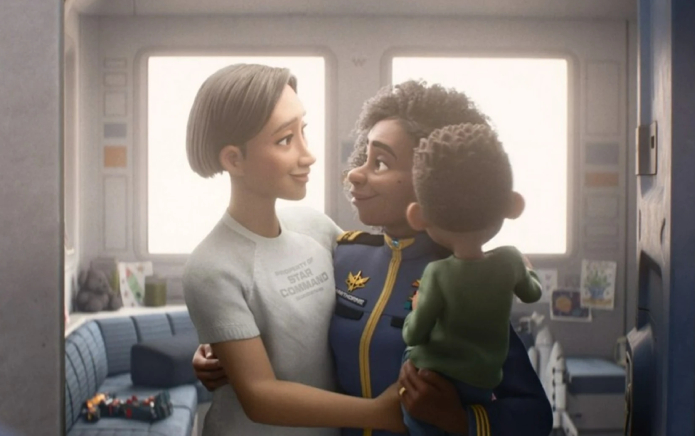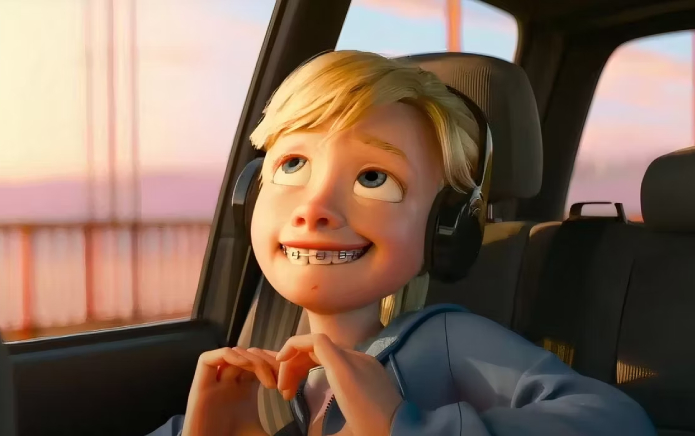What Inside Out 2’s “less gay” controversy means for LGBTQIA+ representation

Just Like Us ambassador Sara Cruz reflects on the recent controversy with Inside Out 2, where Disney reportedly told Pixar employees to make the box office hit “less gay”, and what this means for LGBTQIA+ representation.
WORDS BY SARA CRUZ

Last month, allegations emerged that Disney insisted on edits to Inside Out 2 to make the character Riley “less gay”. While this claim has sparked discussions about censorship and corporate control in the animation industry, the central question is: why does LGBTQIA+ representation matter so much to young audiences?
Lightyear: A step forward, but a missed opportunity
For years, big studios avoided portraying LGBTQIA+ characters out of fear. So when an LGBTQIA+ character appeared in the 2022 Toy Story prequel Lightyear, it seemed like a huge step in the right direction.
The film features Alisha Hawthorne, a Black woman married to another woman. Seeing her life portrayed so naturally on screen, from a kiss shared between partners to raising a child together, felt like a moment of healing. I didn’t realise how much I needed to see a relationship like that in a Disney film until it was right in front of me.

I remember being eight-years-old, with a crush on another girl in my class and thinking: “I wish I was a boy just so you could be my girlfriend.” Not because I wanted to be a boy, but because that was the only scenario I could think of where it would be okay for us to be together. Back then, the idea of two girls dating seemed bizarre, even impossible.
It would have meant everything to see that possibility reflected in the movies I loved.
But when Lightyear failed to deliver at the box office it was, by some, attributed to that same-sex kiss. This kind of reaction demonstrates how quickly LGBTQIA+ representation becomes a scapegoat for financial underperformance. When inclusion is only embraced as long as it’s profitable, it reduces representation to a market calculation rather than a reflection of real life.
The alleged “less gay” edits in Inside Out 2
If the allegations about Disney/Pixar trying to make Riley “less gay” are true, it points to a deeper problem in the industry’s ongoing struggle with LGBTQIA+ representation.
The world is full of diverse stories from people of all identities and experiences — and that world should be reflected on screen. Yet, the fact that even a hint of queerness is deemed too risky for mainstream animation speaks volumes about the industry’s commitment to true inclusivity.
We’ve all seen the argument that LGBTQIA+ themes don’t belong in animated films because they might “indoctrinate” children. This idea completely ignores the fact that LGBTQIA+ children have watched heteronormative stories for most of their lives, yet their identities remain LGBTQIA+.
Stories help children make sense of their feelings and of who they are. Representation is not about ticking a box, but about providing children with the ability to imagine a world where they belong. When they don’t see themselves reflected, they can feel like outsiders — something many LGBTQIA+ young people grow up experiencing.

This is why representation matters — seeing even coded LGBTQIA+ storylines, like the one hinted at between Riley and Val in Inside Out 2, could have changed everything for me as a kid.
An LGBTQIA+ young person might watch their dynamic and pick up on the LGBTQIA-coded elements, while a non-LGBTQIA+ young person might see it as strictly platonic. Both interpretations are valid. But regardless of how the characters identify, if people can see themselves in Riley and Val’s relationship in different ways, that’s the beauty of representation.
LGBTQIA+ young people pick up on cues that resonate with their identity, and it can be a lifeline to see such feelings reflected on screen, helping them see that they’re not alone, and that they don’t need to feel shame for being who they are.
The road ahead for LGBTQIA+ representation
I often think about how different my childhood would have been if I had seen characters like Alisha in Lightyear or Riley in Inside Out 2.
I grew up watching Disney movies and they allowed me to imagine what I could become, but I never saw a version of myself on screen. I didn’t know that the feelings I had for another girl could have meant something more than a friendship. I didn’t know that it was valid to want a future with a wife. In fact, these thoughts actually made me feel like there was something wrong with me.

Ultimately, the issue is not just about one film or one character, but about an entire industry that continues to police which stories are acceptable and which are not.
The allegations surrounding Inside Out 2 reflect a fear of showing LGBTQIA+ lives as real and normal. Representation is not a trend or a marketing strategy — it’s an end goal in itself. It means everything for a young person to see that their feelings, their identity, and their experiences matter, and that they can have a happy future to look forward to, just like anyone else’s.
I can only hope that Disney and other studios commit to telling stories that reflect the diversity of experiences that make up our world. They matter, and watching them on screen will always matter; not just for the kids who are seeing themselves represented now, but for those of us who never had that chance.
Sara is an ambassador for Just Like Us, the LGBT+ young people’s charity. Just Like Us needs LGBT+ ambassadors aged 18-25 to speak in schools – sign up now.
The post What Inside Out 2’s “less gay” controversy means for LGBTQIA+ representation appeared first on GAY TIMES.
Go to Source
Author: Sara Cruz
